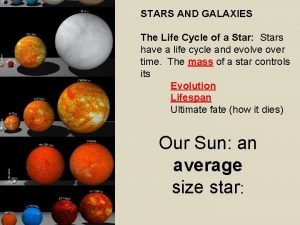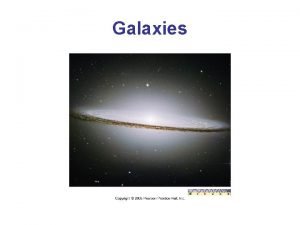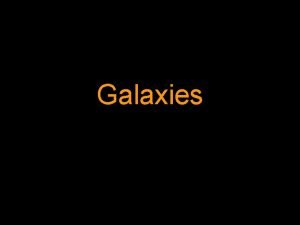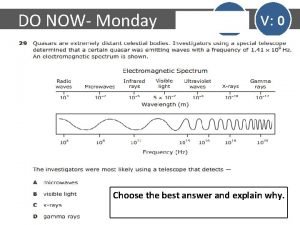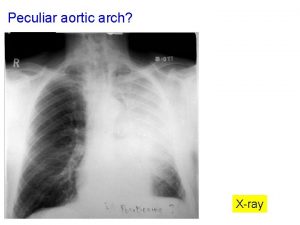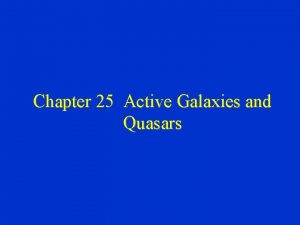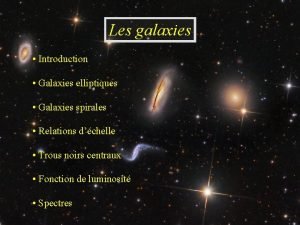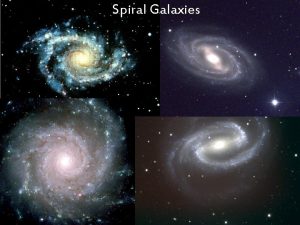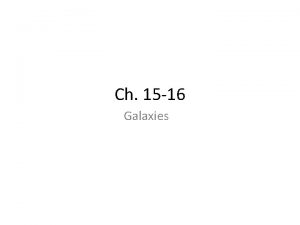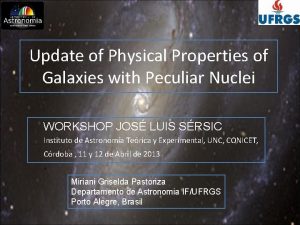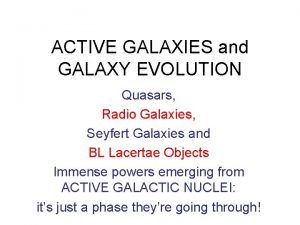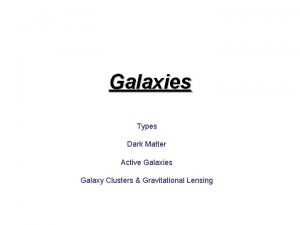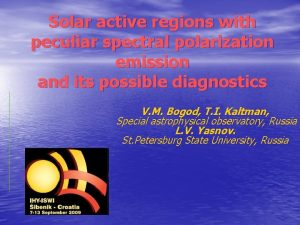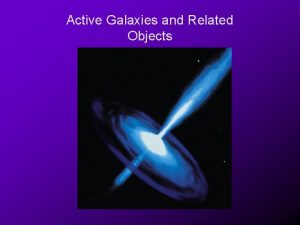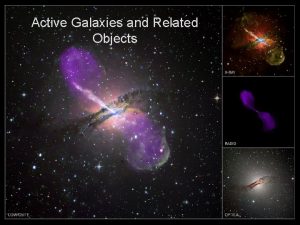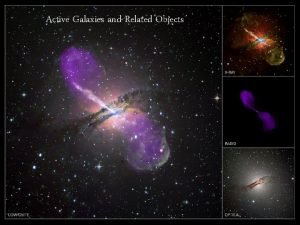Peculiar colliding Galaxies and Active Galaxies Colliding galaxies


















- Slides: 18

Peculiar (colliding) Galaxies and Active Galaxies Colliding galaxies tidal distortions, star formation, evolution (role of simulations) Active galaxies Beginnings – bright nuclei (Seyfert) Quasar discovery - the, high redshift surprise “Non-thermal” radiation (synchrotron +) Models: supermassive black hole + accretion Beyond the nucleus – radio galaxies & jets Superluminal motion, blazars “Unified” theories

COLLIDING GALAXIES Galaxies in collision/interacting/mergers The “Antennae” Computer simulation – interacting pair

COLLIDING GALAXIES M 51 – the Whirlpool and companion

COLLIDING GALAXIES Evidence for mergers Distant Galaxies (large lookback times) – forming via mergers Ring of active star formation

COLLIDING GALAXIES Sgr dwarf elliptical merging with Milky Way

Seyfert galaxies – spirals with very luminous central nucleus strong infrared and radio sources Strong emission H, He, N, O Doppler broadened lines Carl Seyfert

In 1962, British radio astronomer IDENTIFYING THE OPTICAL COUNTERPART Cyril Hazard used moon as an occultive shield RADIO XRAY OPTICAL

3 C 273 spectrum Martin Schmidt 7 x 1044 ergs/s !


Quasars – Quasi-stellar Object (QSOs) Central source so luminous appears star-like Radio/Optical/UV/Xray/Gamma-ray radiation

Giant elliptical M 87 Cen A – radio emission M 87 – jet from nucleus


Active Galaxies Strong radio sources Radio galaxies -- jets of nonthermal radiation – two-lobed appearance due ejection at high energies

Current work: Ph. D student Shea Brown Coma cluster of galaxies and radio “relic” from infall of galaxies into cluster Blue – radio WSRT Red – X-rays ROSAT Green – diffuse radio, GBT

The central engine for active galaxies, radio galaxies, quasars -supermassive black holes 109 x mass Sun Our galactic center 106 x mass Sun http: //www. mpe. mpg. de/ir/GC/index. php

VLBI

“Superluminal” motion Relativistic almost along line of sight

UNIFIED MODELS Radio galaxy Seyfert galaxies/ Quasars Blazars
 Comparative and superlative de confortable
Comparative and superlative de confortable How are active galaxies classified?
How are active galaxies classified? Peculiar institution apush
Peculiar institution apush Hd 101065
Hd 101065 John sacher
John sacher The crucible notes
The crucible notes Boolean operators
Boolean operators Primary active transport and secondary active transport
Primary active transport and secondary active transport Waves are produced by stars and galaxies.
Waves are produced by stars and galaxies. Chapter 30 galaxies and the universe
Chapter 30 galaxies and the universe Elliptical, spiral and irregular
Elliptical, spiral and irregular Primary active transport vs secondary active transport
Primary active transport vs secondary active transport Life cycle of a galaxy
Life cycle of a galaxy Facts about elliptical galaxies
Facts about elliptical galaxies Th eirregulars
Th eirregulars Era of galaxies
Era of galaxies Critical density
Critical density Types of galaxies
Types of galaxies Brainpop galaxies quiz answers
Brainpop galaxies quiz answers












